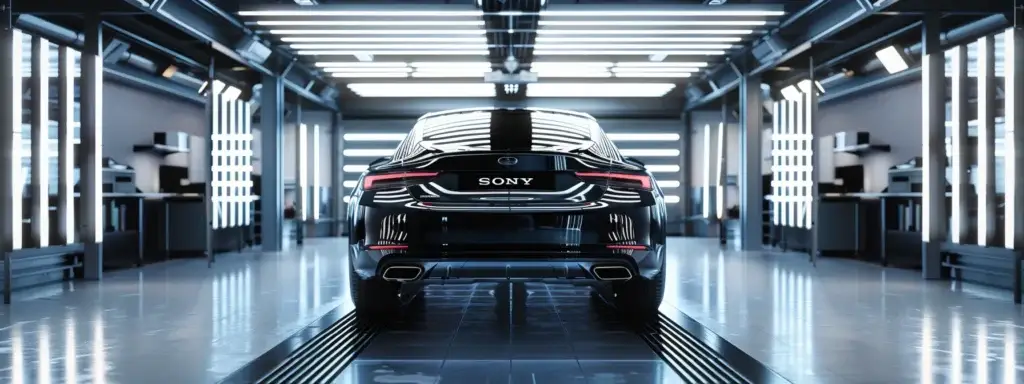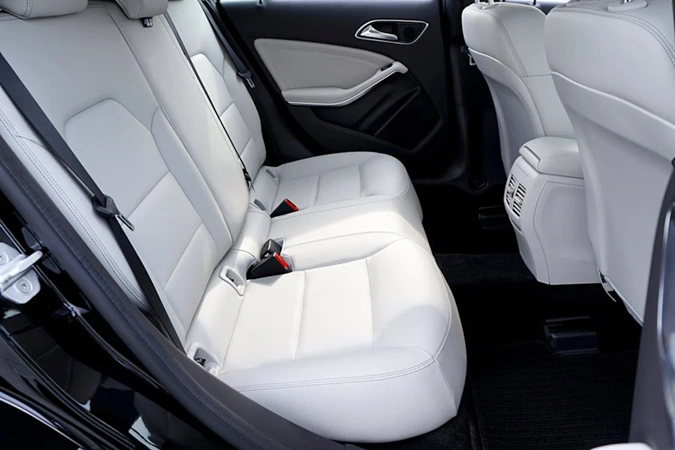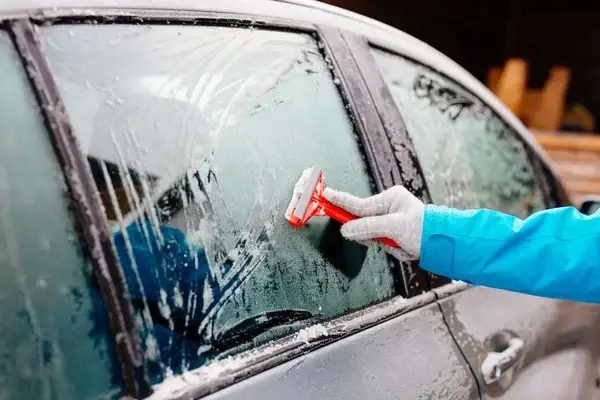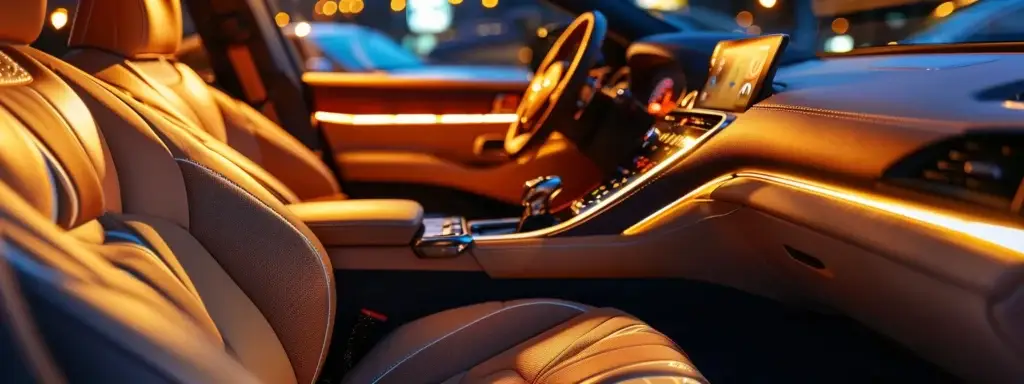- Mon - Fri: 8:00 AM - 4:00 PM / Sat: By Appointment / Sunday: Closed
- 0420 206 206
- Unit 41 / 566 Gardeners Rd, Alexandria NSW 2015
How to Clean a Car Dashboard Effectively: Wipe, Console & Clean Your Car Interior

Jump to...
Is your car dashboard looking grimy and neglected? A clean dashboard not only enhances your vehicle’s appearance but also improves driving safety. This guide will show you how to effectively clean your car’s dashboard, covering essential tools, step-by-step cleaning methods, and common mistakes to avoid. By following our advice, you’ll learn how to maintain a spotless dashboard, ensuring a more pleasant and safer driving experience.
Key Takeaways
- Regular dashboard cleaning enhances visibility, prevents health risks and maintains your car’s value
- Use appropriate cleaning methods for different dashboard materials to avoid damage
- Apply protectants and UV blockers after cleaning to prevent cracking and fading
- Avoid common mistakes like using abrasive tools or spraying cleaners directly on electronics
- Maintain your dashboard with regular light dusting, prompt spill clean-up and parking in shaded areas
Why It’s Important to Clean Your Car Dashboard
Enhancing Visibility
A clean dashboard significantly enhances your visibility while driving. Dust and grime can create dangerous glare, especially during sunny conditions, obscuring your view of the road. Regular cleaning with a microfiber cloth maintains a clear line of sight for both plastic and leather dashboards. Moreover, a simple mixture of water and mild cleaner can work wonders as part of your car detailing routine, complementing other protective measures like window tinting. The benefits include reduced glare from sunlight, improved visibility of instruments, clearer view of the road, and enhanced overall driving safety.
Preventing Health Risks
Regular dashboard cleaning helps prevent health risks from accumulated bacteria. Using a vacuum cleaner to remove loose particles, followed by wiping the surface with a damp towel eliminates stubborn stains while maintaining a hygienic environment. This routine reduces the risk of allergies and respiratory issues caused by airborne dust particles when driving, but also supports protecting your new car with additional treatments like graphene coating.
Maintaining Aesthetic and Value
Regular dashboard cleaning preserves your car’s aesthetic appeal and value by removing debris and preventing ultraviolet damage. This consistent care protects the dashboard surface and maintains its original lustre while ensuring comprehensive maintenance through detailed cleaning. A well-maintained interior significantly boosts your vehicle’s resale value and creates a positive impression. This care extends to other interior elements like the windshield and steering wheel. For optimal results, combine regular cleaning with paint correction and protective treatments.
Understanding Dashboard Materials
Plastic Dashboards
Plastic dashboards are common in many vehicles and require specific care to maintain their appearance and durability. You should clean them regularly using a microfiber cloth and plastic cleaner to remove dust and prevent damage from UV rays. Additionally, a graphene coating can help maintain the dashboard’s finish. Take special care when cleaning around buttons or displays to prevent moisture from seeping into electronic components. For stubborn stains, use a soft-bristled brush to gently scrub the area before wiping clean. Remember to avoid paper towels, harsh chemicals, and aggressive scrubbing as these can scratch the surface or cause discolouration.
Vinyl or Leather-Trimming
For vinyl or leather-trimmed dashboards, a gentle cleaning approach is essential. Use a soft, damp cloth with a mild soap solution to wipe away dirt and grime. For stubborn stains, a soft-bristled toothbrush can be effective, but be cautious not to damage the upholstery. After cleaning, apply a conditioner to protect the material and prevent cracking. Regular maintenance combined with paint protection film will ensure long-lasting protection. Always avoid using paper towels or abrasive materials that could scratch the surface, and maintain a consistent cleaning schedule to preserve the material’s quality.
Sensitive Electronic Panels
When cleaning electronic panels, exercise extreme caution to prevent damage. Use compressed air to remove dust from crevices and buttons. For touchscreens and digital displays, apply a small amount of specialised electronic cleaner to a microfiber cloth, avoiding direct application to prevent moisture ingress. Be particularly careful around connectors and ports, using only a dry cloth for cleaning. Avoid using detergents or oil-based products, as these can harm electronic components. For surfaces with ceramic coatings, always follow manufacturer guidelines and use only compatible cleaning products to maintain the protective layer.
Experience the Glosshaus Difference
Ride with confidence. Contact us now to schedule a professional detailing service.
Essential Tools and Cleaning Products
Microfiber Cloths and Brushes
Microfiber cloths and brushes are essential tools for cleaning your car dashboard effectively. These soft, lint-free materials are gentle on surfaces yet highly effective at trapping dust and dirt. When used with distilled water or a suitable cleaning solution, they can safely clean your dashboard, including hard-to-reach areas around air conditioning vents and menu buttons. For stubborn grime, a soft-bristled brush can provide better accessibility without risking damage to your dashboard’s coating. Microfiber cloths for general cleaning and buffing, soft-bristled brushes for crevices and textured surfaces, used with distilled water or appropriate cleaning solutions, are safe for various dashboard materials and coatings.
Interior-Safe Cleaning Solutions
When cleaning your car’s interior, choose safe solutions that won’t damage surfaces or leave residues. Avoid abrasive cleaners that can scratch your dashboard or harm upholstery. Instead, opt for pH-neutral products designed specifically for automotive use.
| Surface Type | Use | Avoid |
|---|---|---|
| Dashboard and plastic/vinyl | Automotive dashboard cleaner | Household cleaners, silicone-based products |
| Leather upholstery | Leather cleaner and conditioner | Water-based cleaners, harsh detergents |
| Fabric upholstery | Fabric upholstery cleaner | Bleach, ammonia-based products |
| Glass surfaces | Automotive glass cleaner | Ammonia-based products, abrasive cleaners |
Remember to test any new product on an inconspicuous area first.
Protectants and UV Blockers
To protect your dashboard from harmful UV rays and maintain its appearance, apply protectants and UV blockers after cleaning. These products form a protective layer, preventing cracking and fading caused by sun exposure. Many car care kits include UV protection sprays, which are simple to use and provide long-lasting security for your dashboard. Skip harsh chemicals and opt for eco-friendly options, which effectively clean and protect without compromising your vehicle’s interior materials.
Steps to Clean the Inside of Your Car
Initial Prep and Debris Removal
Begin by removing loose debris and personal items from your car interior. Use a vacuum cleaner with a brush attachment to suction dust and dirt from crevices and vents. For hard-to-reach areas, employ compressed air to dislodge stubborn particles. This initial step ensures a clean surface for more effective cleaning and prevents scratching during the wiping process.
Applying Cleaner the Right Way
To apply cleaner effectively to your dashboard, spray cleaner onto a microfiber cloth rather than directly on surfaces. Work in sections using gentle circular motions, paying special attention to textured areas and controls. If needed, use a soft-bristled brush for thorough cleaning. For leather or vinyl surfaces, apply dedicated cleaners to maintain the material’s integrity. This approach prevents oversaturation and protects sensitive electronics.
Targeting Stubborn Spots
For stubborn spots, apply specialised cleaner to a soft cloth and work it gently into affected areas. Use a soft-bristled toothbrush for textured surfaces and around buttons. When dealing with sticky residues, use a microfiber cloth dampened with warm water and mild soap. Remember to test cleaners on an inconspicuous area first to ensure they won’t damage your dashboard’s finish.
Drying and Polishing
After cleaning, dry thoroughly with a clean microfiber cloth and use gentle, circular motions to buff the surface. Pay careful attention to textured areas and crevices throughout the process. For a polished finish, apply dashboard polish with a fresh microfiber cloth using light pressure. This process prevents water spots and streaks while adding UV protection and enhancing appearance.
Finishing Touches with Protectant
Complete the cleaning process by selecting an appropriate protectant for your dashboard material. Apply a thin, even layer using a microfiber cloth, focusing particularly on areas most exposed to sunlight. Allow the protectant to dry completely before driving. This final step creates a barrier against future dirt accumulation and fading while enhancing the dashboard’s lustre.
Secure Your Detail Now
Availabilities are limited. Make a booking today or call us to get started.
Common Mistakes to Avoid
Using Abrasive Tools
When cleaning your car dashboard, avoid using abrasive tools such as rough sponges or scrub brushes. These can scratch the surface of your dashboard, leaving permanent marks and damaging the finish. Instead, opt for soft microfiber cloths or specialised automotive cleaning brushes designed for interior use. These gentler tools effectively remove dirt and grime without risking damage to your dashboard’s surface.
Spraying Directly on Electronics
Never spray cleaning products directly onto electronic components such as screens, buttons, or controls as this can cause short circuits or damage to sensitive electronics. Instead, apply the cleaner to a microfiber cloth first, then gently wipe the electronic surfaces.
For touchscreens, use a damp microfiber cloth. Control buttons should be cleaned with a lightly damp cloth or cotton swab. Display panels require specialised electronic wipes, while air vents can be cleaned using compressed air or a soft brush.
Overlooking Steering Wheel and Door Panels
These high-touch areas accumulate dirt, oils, and bacteria from frequent contact. Regular cleaning of these surfaces maintains hygiene and preserves your car’s interior condition.
Proper cleaning techniques for different areas:
- Steering wheel: Clean with a suitable cleaner and microfiber cloth, paying attention to textured grips and buttons
- Door panels: First vacuum to remove loose debris, then clean with an appropriate solution for the material
- Door handles: Clean weekly with disinfectant wipes
- Armrests: Clean monthly with material-specific cleaner
Understanding these common mistakes will help you maintain your car’s interior effectively while avoiding potential damage to surfaces and electronics.
Maintaining Your Dashboard Over Time
Regular Light Dusting
Regular light dusting of your dashboard prevents the accumulation of dirt and maintains its appearance. Use a microfiber cloth to gently remove dust from the surface at least once a week. Pay special attention to crevices, vents, and around controls where dust tends to gather. This simple routine not only keeps your dashboard looking clean but also prevents scratches that can occur when wiping built-up grime.
Handling Spills Quickly
When you spill anything on your dashboard, act swiftly to prevent staining or damage. Blot the area immediately with a clean, absorbent cloth to remove excess liquid. For sticky substances, use a slightly damp microfiber cloth with a mild cleaning solution. Avoid rubbing, as this can spread the spill and potentially damage the dashboard’s surface. After cleaning, dry the area thoroughly to prevent water marks or residue.
Park in Shaded Areas
To protect your dashboard from sun damage, park your car in shaded areas whenever possible. UV rays can cause fading, cracking, and warping of your dashboard over time. If you can’t find shade, use a sunshade to block direct sunlight. These protective measures help preserve your dashboard’s appearance while maintaining the overall interior temperature of your vehicle.
Conclusion
Transform your vehicle’s interior into a showroom-worthy masterpiece with a professionally cleaned dashboard that enhances both aesthetics and driving safety. Book your premium detailing service with Glosshaus Bespoke Detailing today and experience our industry-leading expertise in precision dashboard restoration and protection. Our certified detailing specialists in Sydney use only the finest materials and proven techniques to deliver exceptional results that last. Contact us now to secure your appointment and join our satisfied clientele who trust us to maintain their vehicle’s pristine condition.
Frequently Asked Questions
You should clean your dashboard at least once a month to prevent dust accumulation and maintain your car’s interior. However, if you drive frequently or in dusty conditions, weekly cleaning may be necessary. Use appropriate cleaning products to avoid damaging the dashboard’s surface and preserve its appearance.
Household cleaners can be safe when used as directed, but some may contain harsh chemicals. For car detailing, it’s best to use specialised automotive products. These are formulated to be safe for your vehicle’s surfaces and finishes, ensuring effective cleaning without risking damage to your car’s paintwork or interior materials.
Vacuuming directly on the dashboard is not recommended. Use a soft brush attachment or microfibre cloth instead to gently remove dust and debris. This method protects delicate surfaces and electronic components from damage, ensuring your dashboard stays clean without risking scratches or electrical issues.
If your dashboard is sticky, it likely needs a thorough cleaning. Use a gentle interior cleaner and microfibre cloth to remove built-up grime. For stubborn residue, try a specialised dashboard cleaner. Avoid silicone-based products as they can increase stickiness over time.
Yes, there are natural cleaning alternatives for car detailing. You can use vinegar, baking soda, lemon juice, and essential oils to create effective, eco-friendly cleaning solutions. These ingredients can tackle dirt, grime, and odours without harsh chemicals, offering a safer option for your vehicle and the environment.
No, steering wheels require special care. Use a gentle cleaner and soft microfiber cloth to avoid damaging the material. Pay attention to crevices and buttons. For leather wheels, apply a suitable conditioner after cleaning to maintain suppleness and prevent cracking.
To prevent dashboard cracking in hot weather, use a sunshade when parked and regularly apply a UV-resistant protectant. Keep your car cool by parking in shaded areas or garages when possible. Avoid placing items on the dashboard that can intensify heat damage.
Yes, excess polish on your dashboard can make it slippery. This can be dangerous, as items may slide off whilst driving. It’s best to use a matte dashboard cleaner specifically designed for interiors, applying it sparingly with a microfiber cloth for a safe, non-slippery finish.
Keep a microfiber cloth in your car and wipe your dashboard daily to remove dust and fingerprints. For deeper cleaning, use a gentle interior cleaner once a week. Avoid silicone-based products that can leave a greasy residue and attract more dust.
Table of Contents

Ready to Shine?
Secure Your Detail Now
We provide 5-Star quality detailing,
Guaranteed
Recent Insights
Have you ever wondered what’s lurking in your car seats? Professional car seat cleaning is essential for maintaining a healthy, comfortable driving environment. This article
Is your car looking dull and neglected? A professional car wash offers more than just a quick rinse. This guide explores the key differences between
Car Detailing
Rediscover the joy of driving a flawlessly clean car.
New Car Protection
Protect your investment and keep your new car looking showroom-new.
Paint Protection Film (PPF)
Drive with confidence knowing your paint is shielded from everyday hazards.
Motorbike Detailing
Give your bike the specialised care it deserves for peak performance and head-turning shine.






